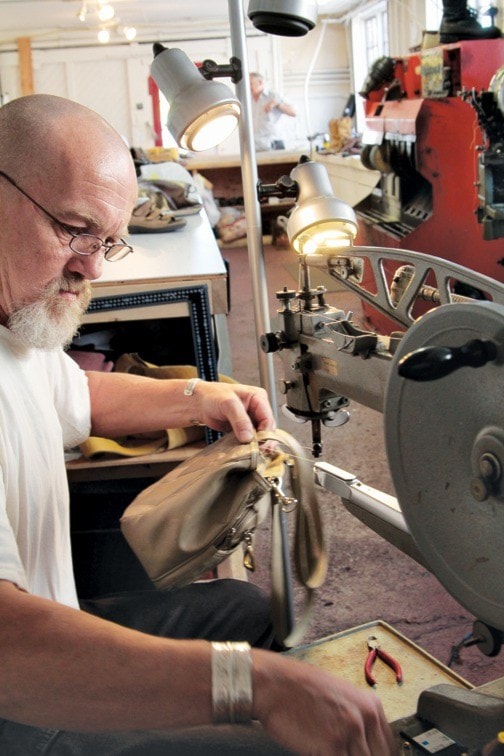If location is everything, Steve Hansl, owner of Instant Shoe Repair, found the niche for his business in a small space on Roberts Street in Nanaimo’s Old City Quarter.
Hansl, 56, is a cobbler.
He repairs shoes and riding tack, makes buffalo hide moccasins, custom leather belts and takes on custom leather projects from his customers.
He is also blacksmith.
“I’m probably the only cobbler/blacksmith – I know I’m the only one on the Island and I’m probably the only one in B.C. and, pushing it, I’d say in Canada,” Hansl said.
He worked in mills, the wire rope industry, construction and other jobs. When he was unemployed in 1990, he took a shoe repair training program not knowing if he would like the work.
“If I didn’t like it, I wouldn’t still be doing it after 20 years,” he said.
Cobblers have been around almost as long as people have worked with leather.
“I don’t know how long people have been called cobblers, but the oldest shoe that I know of is over 5,000 years old,” he said.
Women’s shoes account for 70 per cent of his repair business. Increasingly, shoes are made less with leather and more from synthetic materials that are difficult and sometimes impossible to repair.
But Hansl must work with what his customers bring in.
“You have to or I wouldn’t be doing it, because I couldn’t afford to stay open,” he said.
Many shoe and boot manufacturers and parts suppliers have gone out of business, but Hansl purchases the best materials from surviving suppliers.
“I can’t work with crappy material,” he said. “I buy the best material I can buy and the best leather.”
He pulls out a two-litre can of glue, which cost $85.
“There’s nothing worse than if you put something together and then it comes apart on somebody,” he said. “I tell people my work doesn’t come apart, but if it does I can fix it.”
Materials might be changing with the times, but the tools and fundamentals of shoe repair have stayed the same.
Hansl’s buffing and trimming and sewing machines are 30 to 40 years old. Many surplus machines in Canada and the U.S. are being shipped to Central and South America, where people still make and repair shoes and boots.
Tack repairs and custom work allow him to work with various kinds of leather, including buffalo hide, which is soft like chamois. A customer recently hired him to create a belt with two leather boxes for live and spent shotgun rounds. Hansl tooled images of a shotgun and game birds onto the boxes.
He got into blacksmithing a few years ago when his wife bought him a 150-kilogram anvil and he started experimenting.
He creates custom shelving brackets, cooking utensils, door chimes, towel racks and other items in small propane- and coal-fired forges at his home and sells them from his shoe repair shop.
He plans to continue expanding his blacksmithing business.
photos@nanaimobulletin.com
